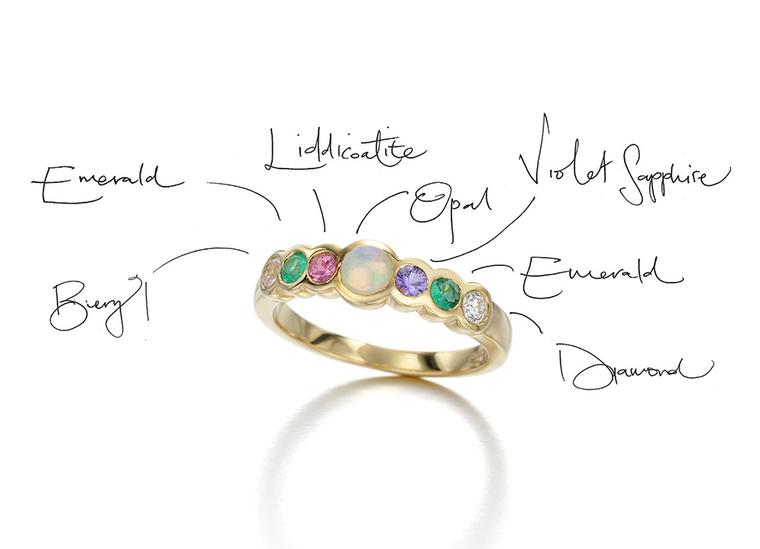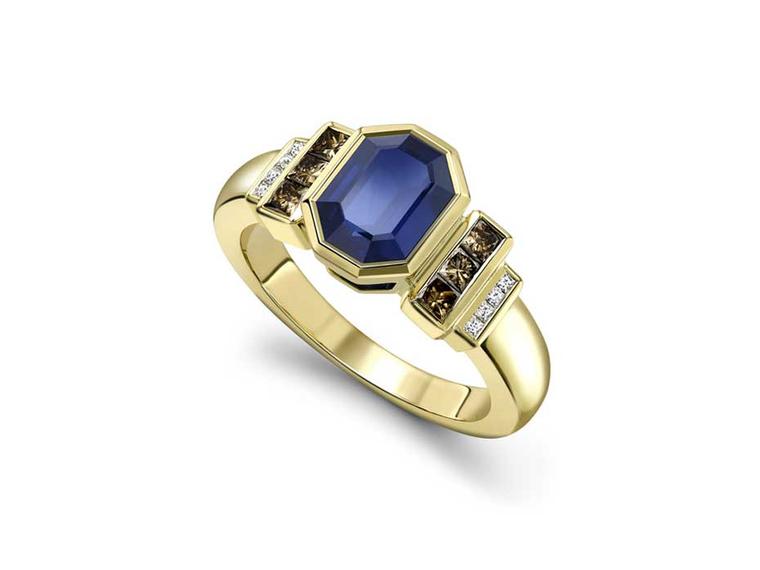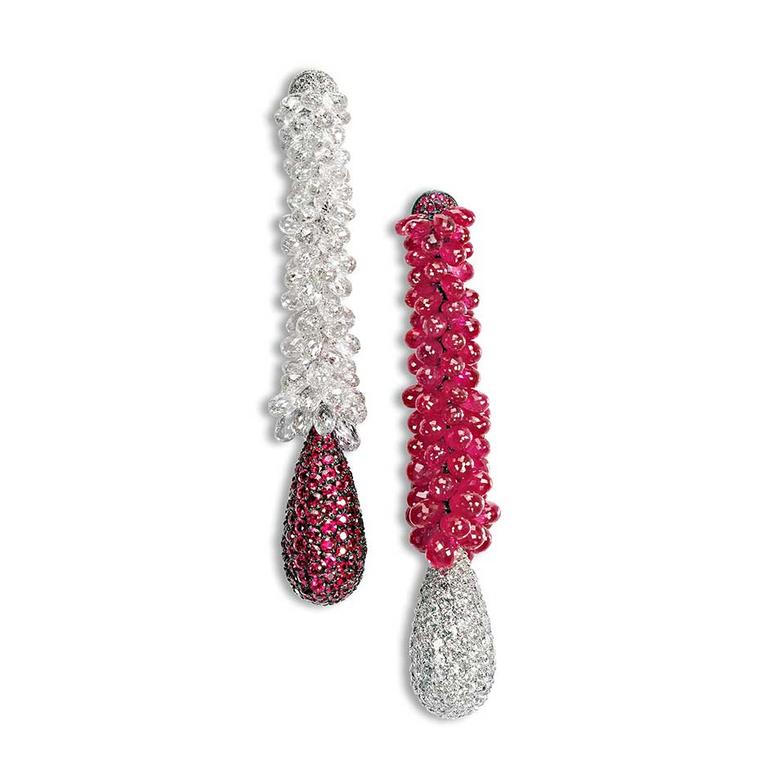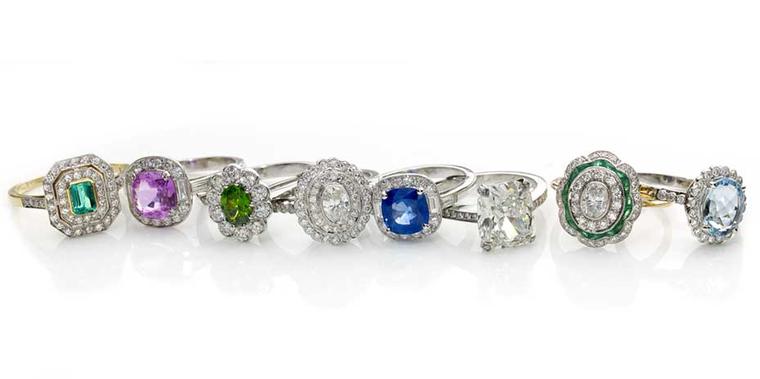
By Åse Anderson
Hugely popular in the Victorian and Edwardian eras, acrostic jewels are experiencing something of a renaissance.
Spelling out your love with different coloured gemstones may seem chaste in this day and age, especially when social media is awash with more overt declarations of affection. But there is an appealing touch of old-school romance to the idea of wearing a jewel imbued with a secret message coded in precious stones. Each gemstone represents a different letter of the alphabet, with A for Amethyst, B for Beryl, C for Citrine, D for Diamond, E for Emerald, and so on.
The history of acrostic jewellery dates back to 18th century Paris when jeweller Jean-Baptiste Mellerio first conceived the idea of spelling out words with coloured gemstones. These sparkling love letters quickly caught on, and some of the earliest acrostic bracelets were created by French jewellery house Chaumet, during the Napoleonic era, as gifts for Empress Joséphine and Empress Marie-Louise.
Acrostic jewellery was also hugely popular with the Victorians, who were renowned for their love of romance, secrecy and hidden meanings. Antique acrostic rings often carry the name of the recipient or words such as amour, beloved, dearest or dear, written in gemstone language. In the Victorian era, engagement rings set with stones spelling out "regards" were often exchanged, as the word carried a much deeper and more romantic meaning back then.
If you are lucky enough to come across a piece of acrostic antique jewellery dating back to these times, it can still be tricky to decipher the message, especially if the piece comes from a non-English-speaking country where the names for the gemstones may be different. To add to the confusion, jewellers would sometimes improvise by using the colour of a gem to represent letters without an associated gemstone, for example fire opal for F. Some stones are also known by other names today, such as garnet, which used to be called vermeil.
Acrostic jewellery has seen a revival in recent years with contemporary versions of the bejewelled love letter, such as Chaumet's ABC collection, and London jeweller Jessica McCormack's Love Letters collection. And with Valentine's Day surely in mind, New York-based jewellery house Verdura is offering a unique interpretation of Victorian sentimental jewellery in the shape of the D.E.A.R bracelet, which was originally designed by Duke Fulco di Verdura in the mid-20th century and spells out this popular form of endearment in diamond, emerald, amethyst and ruby.
But as pretty as they are, these contemporary offerings can't quite compete with acrostic antique jewellery, with all that pent-up passion contained in a gem-studded token of love. "Je t'adore" declares a gold and gem-set bracelet currently on sale through antique dealer Wartski, while 1stdibs has an opulent gold ring dating back to the Georgian era that spells out "dearest".
Coloured gemstones representing the letters in "regard" are arranged into a pretty flower on a Georgian locket from Bentley & Skinner, and the same word glistens in shimmering hues on a ring from the late 19th century on sale through Berganza in London's Hatton Garden. The Art Deco inspired stacking rings from US jeweller Siegelson, meanwhile, demonstrate how acrostic jewellery was reinterpreted to suit the fashions of the 1920s.
Romantic, innovative and beautiful, the secret messages of love enclosed in these jewels are as relevant today as they were hundreds of years ago.
















